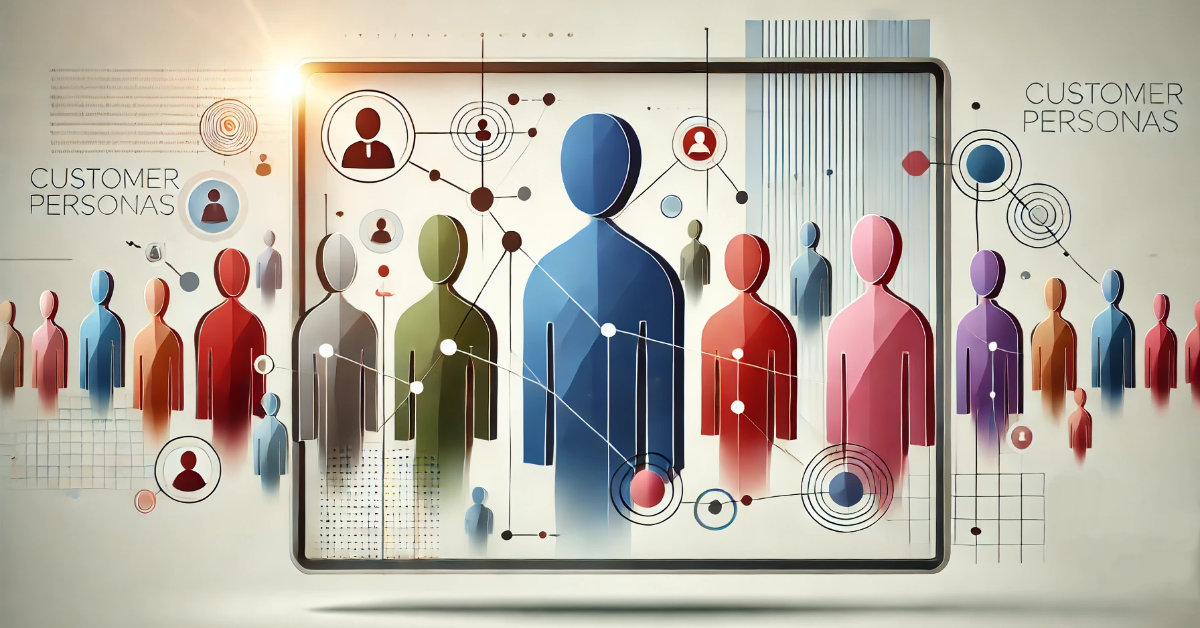A guide to defining your ideal customer.
A customer persona is a fictional representation of your ideal customer, helping you refine your marketing and business strategies. This guide walks you through key aspects like demographics, challenges, goals, and buying behaviors. By understanding your audience on a deeper level, you can create personalized strategies to connect with them more effectively.
Introduction
Creating a detailed customer persona is a crucial step in understanding your audience. It helps you tailor your marketing, products, and services to meet their needs more effectively. A well-defined customer persona provides clarity on who your ideal customers are, what they care about, and how they make decisions. This guide will walk you through the key components of a customer persona and how you can use it to refine your business strategies.
Before we dive in, download your Customer Persona Blueprint to follow along and start building your own persona.
1. Basic Information: Who Are They?
Assigning a fictional name and basic details to your persona helps humanize your target audience.
- Name: (Choose a relatable name, e.g., “Sarah, the Busy Entrepreneur”)
- Age: (Define an age range, e.g., 30-45 years old)
- Gender: (If applicable)
- Location: (City, state, country, or rural vs. urban setting)
- Education Level: (High school, college, graduate degree, etc.)
- Occupation: (Industry, job title, business owner, freelancer, etc.)
Example:
Sarah is a 35-year-old entrepreneur living in Austin, Texas. She holds a bachelor’s degree in marketing and runs a small online business specializing in handmade eco-friendly products.
2. Demographics: What Defines Their Background?
Understanding demographic data helps you segment your audience effectively.
- Income Level: (Low, middle, high-income bracket, specific salary range)
- Family Status: (Single, married, children, etc.)
- Geographic Location: (Urban, suburban, rural)
- Employment Status: (Full-time, part-time, freelancer, unemployed, etc.)
Example:
Sarah earns around $70,000 annually from her online store. She is married and has one child. She lives in a suburban area, working full-time on her business.
3. Psychographics: What Drives Them?
Psychographic insights delve into the customer’s motivations, lifestyle, and values.
- Interests/Hobbies: (What they enjoy doing)
- Values: (Sustainability, affordability, convenience, quality, etc.)
- Lifestyle: (Busy professional, active, homebody, traveler, etc.)
- Personality Traits: (Analytical, impulsive, methodical, creative, etc.)
Example:
Sarah values sustainability and prefers eco-friendly products. She enjoys reading business books, networking with fellow entrepreneurs, and spending weekends outdoors with her family. She is creative and detail-oriented but struggles with time management.
4. Challenges/Pain Points: What Obstacles Do They Face?
Identifying challenges helps you position your product/service as a solution.
- What are their primary challenges?
- What problems are they trying to solve?
- What are their frustrations related to your product/service?
Example:
Sarah struggles with balancing work and family life while running her business. She finds it hard to attract new customers and optimize her marketing efforts on a limited budget.
5. Needs/Goals: What Are They Striving For?
Understanding their goals allows you to align your offerings with their aspirations.
- What are their immediate needs?
- What are their long-term goals?
Example:
Sarah wants to increase brand awareness and grow her customer base. In the long term, she hopes to expand her product line and automate parts of her business.
6. Buying Behavior: How Do They Make Decisions?
Analyzing purchasing behavior helps you refine your sales and marketing strategies.
- How do they make purchasing decisions?
- What influences their buying behavior? (Price, quality, brand reputation, recommendations, etc.)
- Preferred communication channels (Social media, email, word-of-mouth, etc.)
Example:
Sarah prefers quality over price but appreciates affordability. She trusts peer reviews and follows recommendations from business influencers. She engages most with brands on Instagram and via email newsletters.
7. How Your Business Helps: Solving Their Problems
Clearly defining how your business fits into their journey.
- How does your product/service solve their problems or meet their needs?
- What unique benefits do they gain from using your product/service?
Example:
Sarah benefits from a marketing automation service that saves her time and helps her reach the right audience. A social media content planner designed for small businesses helps her streamline her promotional efforts.
8. Quotes: Summarize Their Perspective
Including a fictional quote helps encapsulate their needs and concerns.
Example Quotes:
- “I need tools that simplify my marketing efforts without breaking the bank.”
- “I want to grow my business without spending all my time on social media.”
Key Takeaways
- A well-defined customer persona helps you tailor your marketing and business strategies effectively.
- Demographic and psychographic details provide insights into customer behavior and preferences.
- Identifying pain points and needs ensures your product/service aligns with customer expectations.
- Understanding buying behavior helps refine your sales and communication strategies.
- Regularly updating and revisiting your persona keeps your strategies relevant and aligned with audience evolution.
Final Thoughts: Put Your Customer Persona to Work
Developing a detailed customer persona gives you a competitive edge. It helps you tailor your marketing, product development, and overall business strategy to meet your ideal customers’ needs. By revisiting and refining your persona regularly, you ensure that your strategies evolve alongside your audience.
Are you ready to create your customer persona? Download your Customer Persona Blueprint to get started!
Have insights or experiences to share? Leave a comment below! And if you found this guide helpful, consider subscribing for more expert tips and resources to grow your business.
